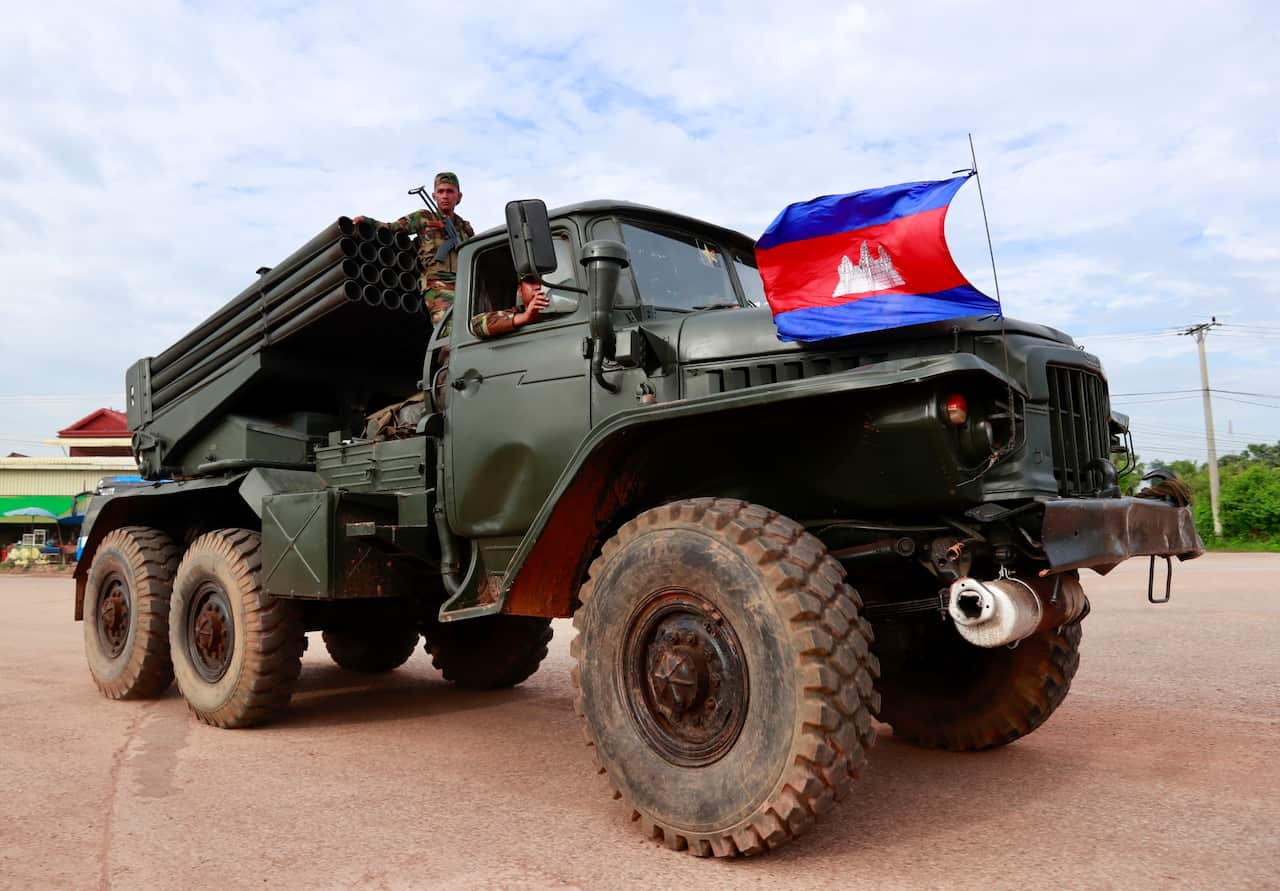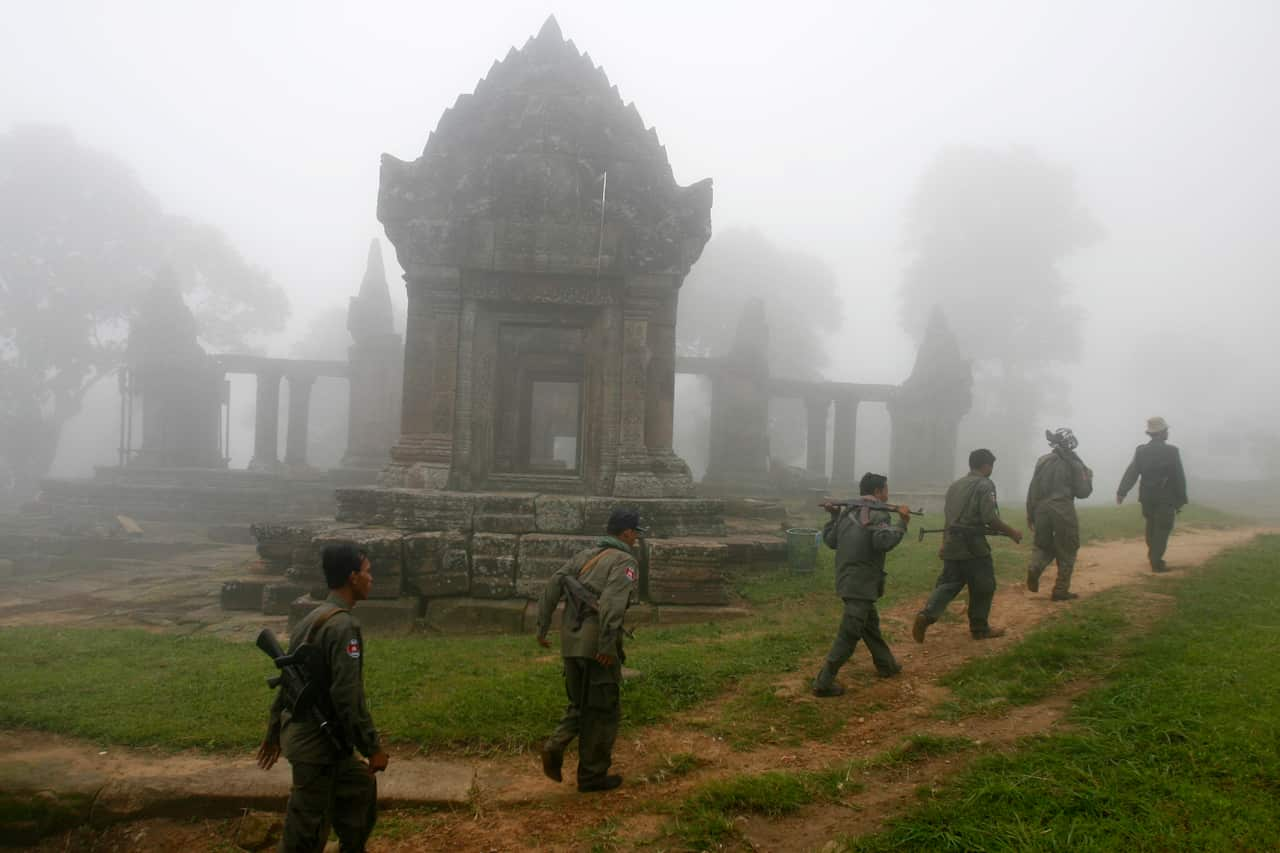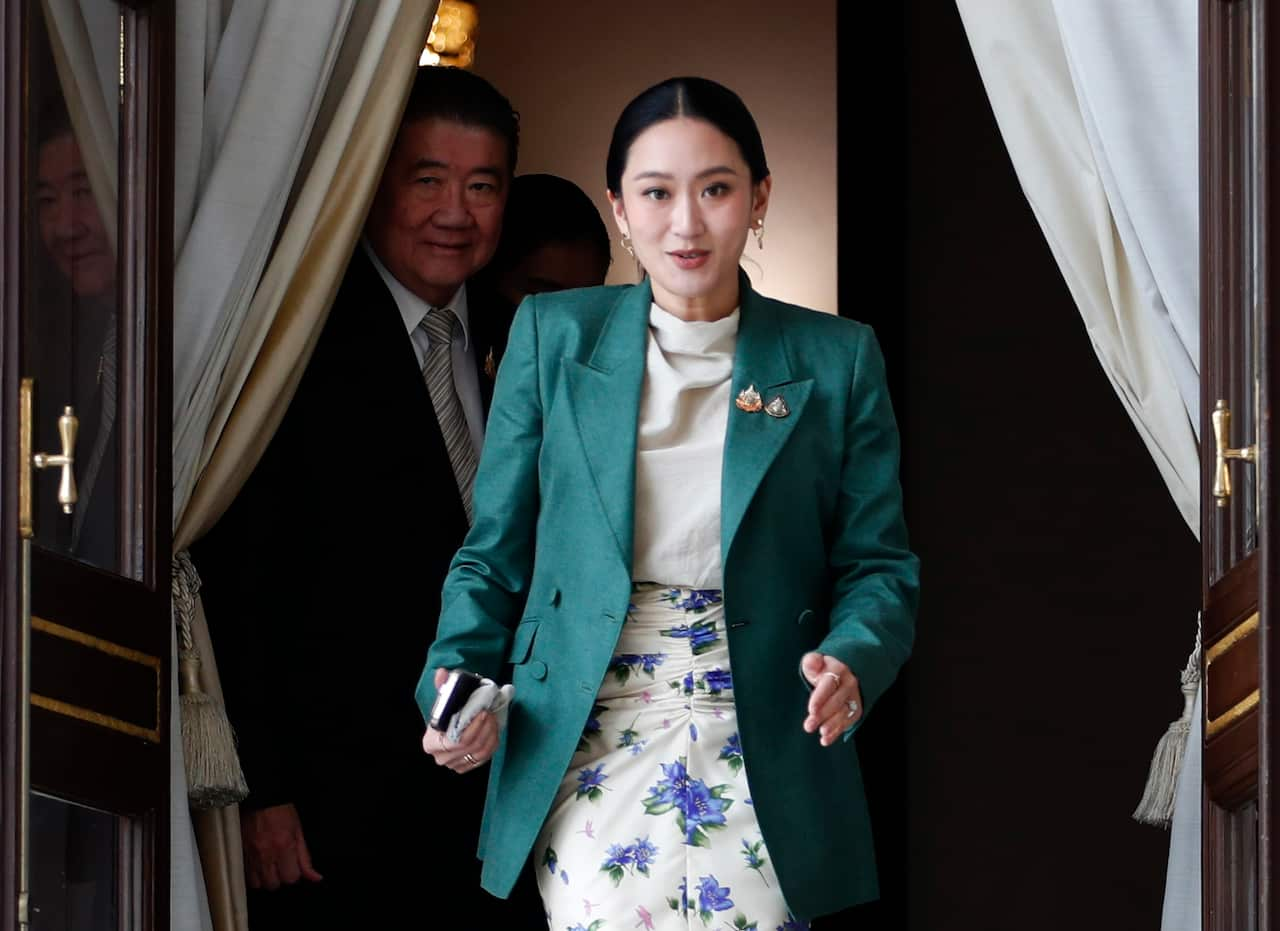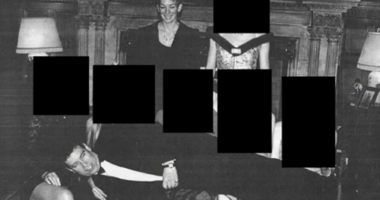Share this @internewscast.com
Tensions began rising between the Southeast Asian neighbours in May, following the killing of a Cambodian soldier during a brief exchange of gunfire, and have steadily escalated since, triggering diplomatic spats and now, armed clashes.
What is the current situation?
Both sides accuse each other of firing the first shots that started the conflict on Thursday, which have so far claimed the lives of at least 16 civilians, most of them on the Thai side.

Cambodian soldiers ride on a self-propelled multiple rocket launcher in Oddar Meanchey province. Source: EPA / Kith Serey
Cambodia has deployed truck-mounted rocket launchers, which Thailand says have been used to target civilian areas, while the Thai armed forces despatched US-made F-16 fighter jets, using one to bomb military targets across the border.
Thailand’s acting Prime Minister Phumtham Wechayachai warned on Friday that the cross-border clashes “could develop into war” as the countries continued trading deadly strikes.
Where does the dispute originate?
That map, which Thailand later contested, was based on an agreement that the border would be demarcated along the natural watershed line between the two countries.
Claims over ownership of historical sites have raised nationalist tension between the two countries, notably in 2003 when rioters torched the Thai embassy and Thai businesses in Phnom Penh over an alleged remark by a Thai celebrity questioning jurisdiction over Cambodia’s World Heritage-listed Angkor Wat temple.
What were previous flashpoints?
The International Court of Justice awarded the temple to Cambodia in 1962, but Thailand has continued to lay claim to the surrounding land.

Cambodian soldiers patrol around Preah Vihear temple in Cambodia in 2008. Source: AP / Heng Sinith
Tension escalated in 2008 after Cambodia attempted to list the Preah Vihear temple as a UNESCO World Heritage site, leading to skirmishes over several years and at least a dozen deaths, including during a weeklong exchange of artillery in 2011.
Two years later, Cambodia sought interpretation of the 1962 verdict and the ICJ again ruled in its favour, saying the land around the temple was also part of Cambodia and ordering Thai troops to withdraw.
What’s behind recent troubles?
But nationalist sentiment has risen in Thailand after conservatives last year questioned the government’s plan to negotiate with Cambodia to jointly explore energy resources in undemarcated maritime areas, warning such a move could risk Thailand losing the island of Koh Kood in the Gulf of Thailand.

The Constitutional Court ordered the suspension of Thai Prime Minister Paetongtarn Shinawatra from duty pending the judicial review of a petition concerning a leaked audio clip of a phone call conversation with Cambodian Senate President Hun Sen. Source: EPA / Rungroj Yongrit
Tensions also rose in February when a group of Cambodians escorted by troops sang their national anthem at another ancient Hindu temple that both countries claim, Ta Moan Thom, before being stopped by Thai soldiers.
In the call, the 38-year-old prime minister appeared to criticize a Thai army commander and kowtow to Hun Sen, drawing public fury and a complaint from a group of senators, which led to her suspension by a court order on July 1.
Have there been any resolution efforts?
Cambodia, meanwhile, said existing mechanisms were not working and it planned to refer disputes in four border areas to the ICJ to settle “unresolved and sensitive” issues that it said could escalate tensions.











